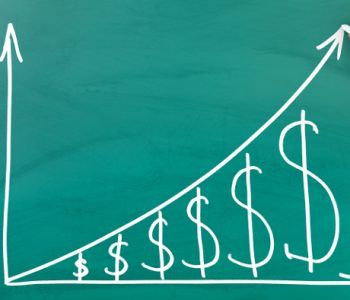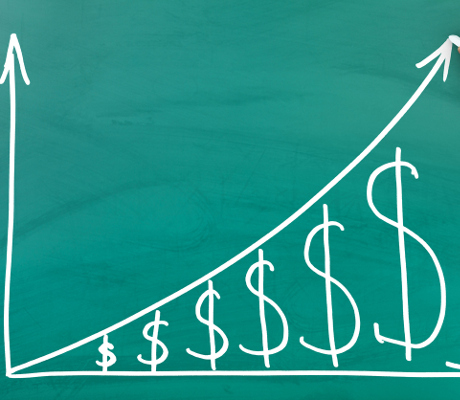5 Dividend Aristocrats That Are Extremely Cheap

Stocks That Are Cheap Dividend Aristocrats
One common experience for many people is buying a big-ticket item, such as a car. Such experiences often require hours on the Internet and visiting stores—in this case, dealerships—to get as much information as possible before a decision is made.
There are many different options when it comes to choosing a particular car. One common factor for buyers is the price. When it comes down to it, all consumers want to pay as little as possible for an item. Then, once a deal is agreed to, you simply drive off the lot with your new ride.
Investing is really no different from buying a car. Just like there are many different cars to choose from, there are many different investments as well.
There are also a variety of metrics that could be used to find a cheap investment. To get a deal on a stock, it must be trading at an attractive valuation when compared to its peers or the overall index. Also consider that sometimes a stock is trading at a discount because the market may be missing some important information effecting the company.
A great metric to determine whether a stock is a cheap dividend stock is the price-to-earnings (P/E) ratio. The ratio provides the multiple that is being paid based on the company’s earnings. When the ratio is lower, it is being purchased at a discount, which is ideal for long-term, patient investors.
A great source of info for income investors is the S&P 500 Dividend Aristocrats index. “Dividend Aristocrats” are companies that have a large market cap and a history of growing their dividends for at least 25 years.
Just like buying a car at an incredible price, you should be proud to locate cheap dividend aristocrat stocks.
Below, I have provided a chart of cheap dividend aristocrat stocks.
Cheap Dividend Aristocrat Stocks
| Sr.No | Symbol | Company Name | Price | Dividend Yield | Price/Earnings Ratio |
| 1 | TGT | Target Corporation | $66.64 | 3.60% | 12.23 |
| 2 | TROW | T. Rowe Price Group Inc | $72.70 | 2.97% | 16.44 |
| 3 | BEN | Franklin Resources | $39.77 | 2.01% | 13.51 |
| 4 | WMT | Wal-Mart Stores Inc | $67.70 | 2.95% | 14.71 |
| 5 | ABBV | Abbvie Common Stock | $61.58 | 4.16% | 16.61 |
#1 Target Corporation
Target Corporation (NYSE:TGT) stock (TGT stock) is a cheap dividend aristocrat stock, compared to its peers and the overall index.
The current price-to-earnings (P/E) ratio for TGT stock is 11.95 times, much lower than the industry average of 23.3 times. TGT stock is also attractive when compared to the S&P 500 index, which has a P/E ratio of 26.10 times.
TGT stock is a dividend growth stock because there has been an increase in the dividend for the past 49 years. The dividend policy is reviewed every year in June.
Another reason to consider TGT stock is because of its volatility, which is less than the overall market. This means there are very few swings, if any, in the daily price movements. This is based on Target’s beta of 0.58, which is compared to a beta of 1.0 for the overall market. If the overall market saw a down day of one percentage point, then TGT stock would see an average down day of 0.58%.
In addition to the dividend’s long history, a recent move shows evidence that Target’s focus remains on the retail business. That move is the sale of its pharmacy business to CVS Health Corp (NYSE:CVS), which now has locations inside Target stores. Now, when Target customers need assistance with their health needs, they will turn to CVS, the market leader, benefiting both companies. (Source: “CVS Health and Target Announce Completed Acquisition of Target’s Pharmacy and Clinic Businesses,” CVS Health Corp, December 16, 2015.)
#2 T. Rowe Price Group Inc
T. Rowe Price Group Inc (NASDAQ:TROW) stock is a unique company you may not have heard of, operating in the financial services segment of the market. It manages money on behalf of its clients for their retirement and business needs, as well as estate planning. The company has a presence around the world with offices in San Francisco, London, and Hong Kong.
When looking at the balance sheet of many companies, a common occurrence to find is debt. When debt is present, it is often because it was used to grow the business at a faster rate. A loss of focus and too much debt could harm the financial strength of the company and affect shareholders’ bottom lines.
But TROW stock is in a rare class of its own, with zero debt on the balance sheet. The company is still using its cash to grow its business rather than incur debt. It’s clearly working, given the growing revenue line; it has grown over 50% over the past five years.
With TROW stock being debt-free, shareholders have been rewarded with dividend payments. The dividend yield for TROW stock is 2.97%, which is based on the current trading price of $72.70. The dividend is paid on a quarterly basis, in the amount of $0.54. The dividend has seen increases over the past 30 years and, given the strong balance sheet, could continue to do so.
#3 Franklin Resources
Franklin Resources, Inc. (NYSE:BEN) is part of the S&P 500 Dividend Aristocrat index because the dividend payment has seen an increase over the past 35 years. The most recent hike took place in December, as part of the dividend policy’s annual review. The current payment is $0.20 per share, with BEN stock is trading at $39.77 and offering a yield of 2.01%.
Going by the fundamentals, Franklin Resources stock looks appealing. For starters, its P/E ratio is 13.51 times, which is nearly half of that of the S&P 500’s 26.10 ratio.
Second, Franklin Resources has a strong balance sheet. This can be seen via debt-to-capital ratio, which details whether the company is debt-heavy or if that debt is being used strategically to grow the business. A ratio below 50% is what investors are looking for, which they’ll find with BEN stock’s ratio of 14%.
#4 Wal-Mart Stores Inc
Wal-Mart Stores Inc (NYSE:WMT) is known as a consistent dividend payer, having paid a dividend since 1974. The WMT stock dividend policy is reviewed in February of each year following the holiday shopping season, which is the retailer’s busiest period.
The current dividend is $0.50 per share on a quarterly basis. To determine if continued growth is possible, the best metric to look at is the payout ratio. This ratio represents the percentage of earnings that are given to investors in the form of the dividend. For WMT stock, the payout ratio is approximately 47%, which provides flexibility to grow the dividend.
Another method of rewarding shareholders has been share buybacks. A share repurchase program for $20.0 billion worth of shares was announced in 2015 and is expected to be completed in 2017. With a conservative payout ratio, there is the possibility of more dividend hikes and buybacks in the future. (Source: “Walmart strategy drives growth and sustainable returns, Plans $20 billion share repurchase program over two years,” Wal-Mart Stores, Inc., October 14, 2015.)
Walmart’s business has two sides. The first would be the traditional brick-and-mortar locations, which are seeing single-digit growth. The other part of the business is the e-commerce side, which is growing in the double digits. More has been invested into this side of the business, including the acquisition of Jet.com, Inc. in 2016. (Source: “Walmart Completes Acquisition of Jet.com, Inc.,” Wal-Mart Stores, Inc. September 19, 2016.)
#5 Abbvie Common Stock
AbbVie Inc (NYSE:ABBV) stock is currently trading with a P/E ratio of 16.61 times, making ABBV stock also below that of the S&P 500. There are growth opportunities to increase both the bottom line and the multiple available, which is why ABBV stock would be considered a cheap dividend aristocrat stock.
There are over 40 drugs in the company’s pipeline, which are in various stages of their respective trial phases. These drugs will help treat patients with conditions such as cancer, Alzheimer’s disease, multiple sclerosis, and hepatitis C.
However, these drugs require cash for both research and development, and to pay for the regulatory applications. Approximately 20% to 25% of AbbVie’s revenue is reinvested into R&D.
The percentage paid via the dividend is 53%. The dividend has risen for the past 44 years, implying a focus on rewarding shareholders. And, with potential for growth hitting the bottom line once the drugs are approved—and the conservative payout ratio—chances of this streak continuing are likely.











